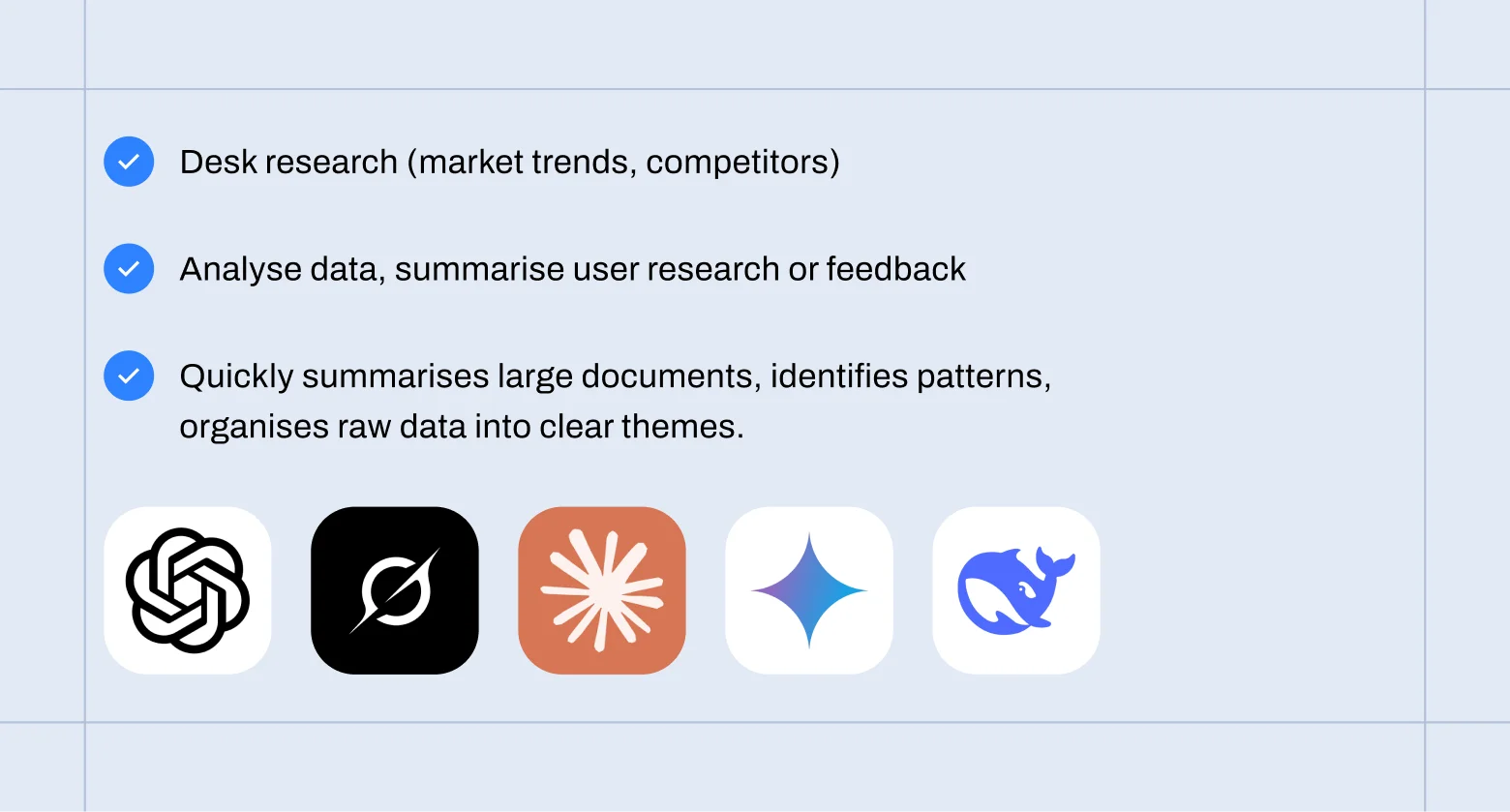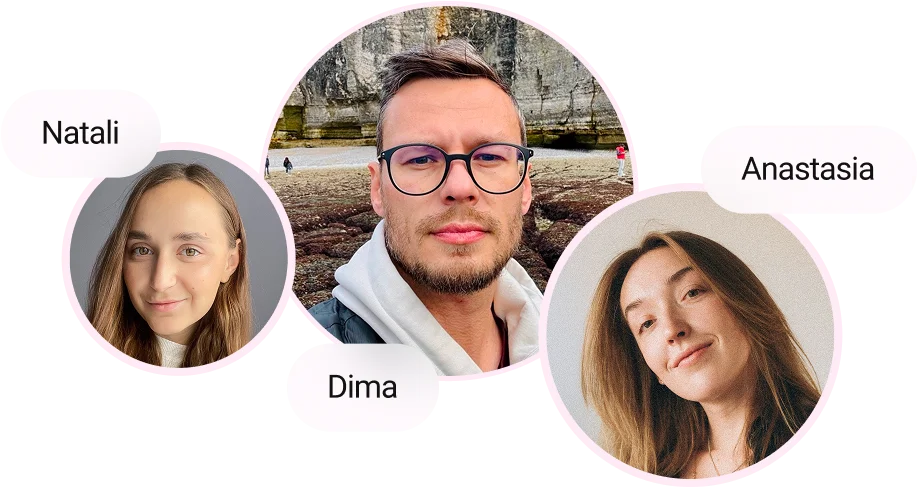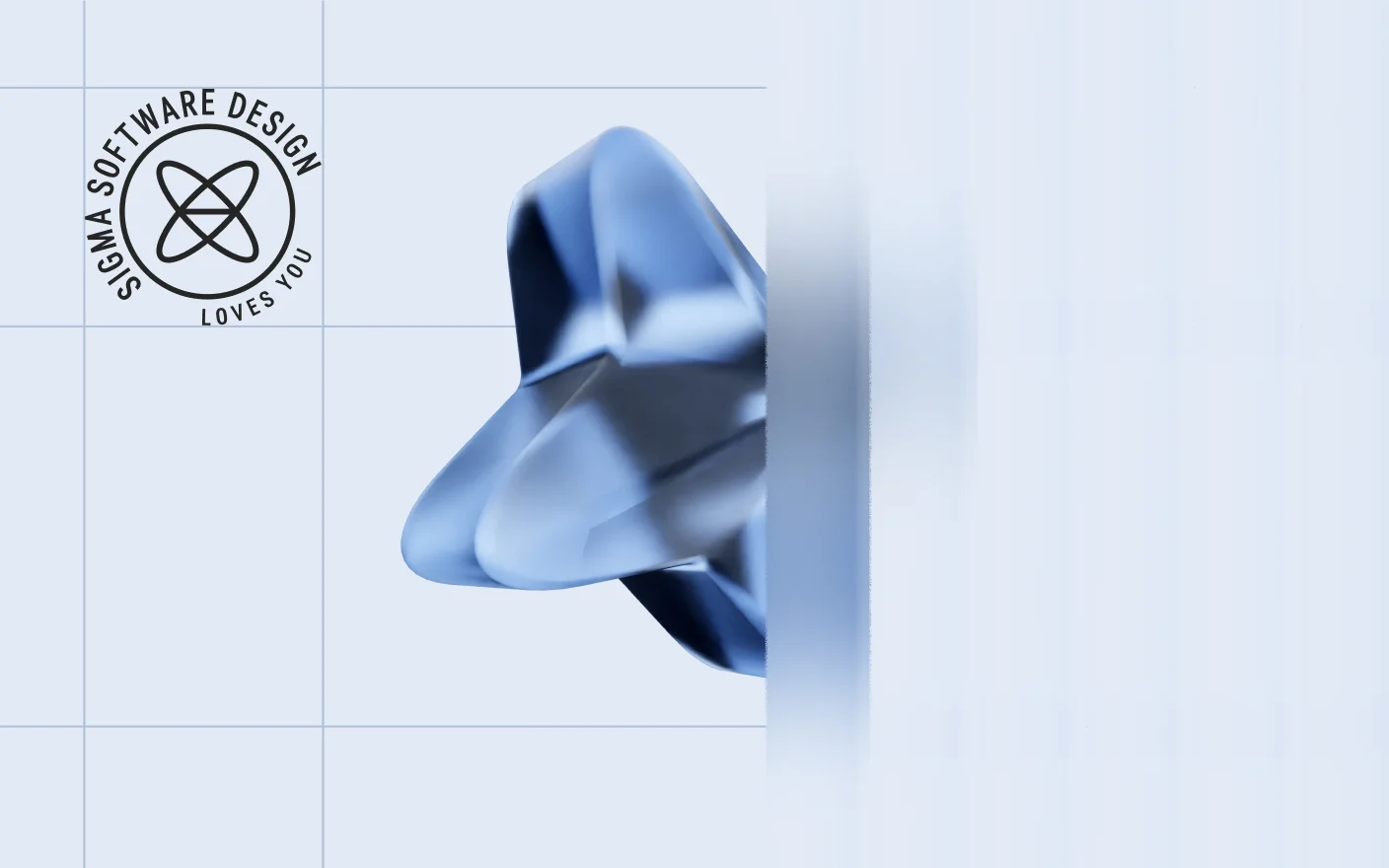Headlines claim: designers, writers, and developers may soon be replaced by machines. AI can design complete digital products and instantly translate them into code — all from a single prompt. But is that really the case? Should we fully rely on AI tools when designing digital products, and what value will they bring to businesses?
At Sigma Software Design, we’ve explored these questions firsthand. In this article, we’ll share how our team leverages AI capabilities to create outstanding digital experiences without losing the creative touch — combining intelligent tools with human insight to deliver better results, faster.
Technology that once seemed like science fiction has become part of our everyday workflow. Now AI writes compelling copy, creates stunning visuals across a variety of styles, and improves lightning-fast. However, the human touch is what still makes all the difference — turning standardized templates into truly special designs. That’s why at Sigma Software, we combine the best of both worlds: AI’s speed and capabilities with our team’s creative vision and real-world experience. This approach helped us streamline the design workflow, so we want to share our best practices and AI strategies that worked best for us and our customers. Further, we’ll describe how we use AI at each stage of the design process in detail.
Design Workflow with AI Phase-By-Phase
1. Discovery: Understanding the User and Business Context faster with AI
Just like every interaction with generative AI starts with a prompt, every project starts with a business idea. Over the years, we’ve worked on a wide range of products across different industries — and no matter the domain, success always begins with understanding the needs of the users and the goals of the business. That’s what the discovery phase is all about. It’s the foundation of any strong digital product, and where the real design process begins.
Tools like ChatGPT, Claude, and Gemini help us get familiar with a new domain and summarize market trends quickly. They assist us in surfacing early user pain points and make our so-called desk research way faster.

AI is also a lifesaver when dealing with raw client data. Whether it’s notes from discovery calls, onboarding analytics, or tons of customer feedback, AI helps us make sense of it all. We use it to transcribe interviews, identify recurring patterns, and summarise insights that would otherwise take hours to process. It’s not just about speed — it’s about freeing up time and mental space, so the team can focus on what really matters for better design decisions.
Once we’ve gathered and structured all the insights, both from desk research and client-provided data, we move to the early ideation stage. That’s where visual thinking starts to take shape.
It’s tempting to think that one prompt can provide you with a ready-made solution. However, when you’re trying to craft a unique design concept or define a visual language that connects emotionally with users, AI often falls short. If you do not have a strong underlying idea and a precise brief, AI outputs tend to look generic and uninspired. This concern echoes insights from Nielsen Norman Group, which noted that even in 2025, AI tools are still improving in narrow tasks, but lack designers’ depth of understanding and creativity. Yet today, the best AI solutions focus on specific, repeatable tasks — not generating entire original designs.
2. Ideation: Crafting Visual Concepts with Human Insight and AI Support
When it comes to crafting a visual concept, there’s always a designer behind the idea. Someone who understands both the project details and the broader cultural and emotional landscape around it. That’s why the designer’s role is significant during the ideation.
At this stage, we use moodboards, associative maps, and references to form a visual metaphor — something that speaks for the brand on a deeper level. This metaphor is what sets the tone and foundation for all our future design decisions. AI may help us brainstorm during the ideation phase, but only human insight shapes meaningful and unique concepts. The best part of it, that the market provides a wide variety of such tools. So, professionals may choose the one that suits their process or even set up their own toolkit to work more efficiently on projects.
Read More: How Our Designers Really Use AI Day-to-Day: Inside Look
So, during this stage, AI unlocks more room for experimentation and allows designers to concentrate on the concept, the emotion, and the story behind the visuals. At the same time, it empowers clients to take part in shaping the direction early on. As a result, we get a more aligned, fluid, and expressive creative process amplified by intelligent tools.

3. Design Development: Accelerating Production with AI
Once the visual concept and direction are set, AI steps up in a big way. It really shines in the production phase. At this point, AI helps us with everything, from generating assets to crafting user-friendly microcopy (buttons, labels, descriptions), using tools like Midjourney, Krea.ai, Freepik, Flux, or Adobe Firefly. Yet, one of the biggest advantages is that it speeds things up during production without compromising quality. Hence, designers can focus on refining details and pushing the experience further, instead of spending time on repetitive tasks.
The designers use a variety of tools daily, and these tools evolve at a rapid pace. Now, many of them have built-in AI features that change the way we work — often without us even noticing. Figma, for example, has introduced AI-powered text and image editing, background removal, and more. This means the design flow is constantly reshaping from the inside out, with or without extra AI instruments. Whether we want it or not, the design process is already transforming, and there is no going back.
How Client Projects Benefit from our AI Approach
Our philosophy is simple: use AI where it excels while keeping human insight at the center of strategic decisions. But perhaps the most exciting part of our AI-enhanced approach is how it transforms our collaboration with the clients’ teams. AI opens up entirely new ways for clients to be more involved in the creative process. It’s now easier to align on a shared direction early on thanks to faster idea generation, collaborative moodboarding, and real-time visual experiments. This makes changes less costly and more fluid, helping avoid the usual bottlenecks. With the help of AI, a rough prototype can evolve in just a few hours, allowing teams to validate ideas faster and with greater clarity. It builds a shared language between designers and clients. Also, feedback loops became shorter while design decisions were grounded in something more tangible than abstract concepts.

Conclusion: Embracing AI as a Collaborative Partner
With the emergence of AI, we are now able to bring creative ideas to life faster and easier. Hence, today, projects time-to-release is shorter, and businesses gain more agility to maintain the speed of a rapidly changing market and remain competitive.
The future of design lies in this partnership between humans and intelligent tools, where AI acts as a co-pilot, helping teams innovate faster and deliver more meaningful experiences. As AI continues to evolve, embracing it thoughtfully will be key to staying ahead of the curve.
So, if you are looking for ways to integrate AI into your process and need practical tips, you’ve come to the right place. Follow us for more insights and expert recommendations from our team.






.webp)

